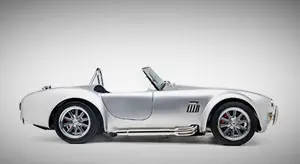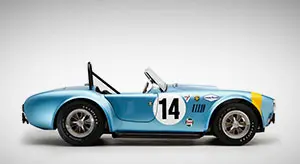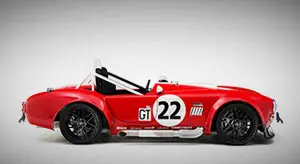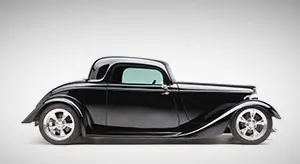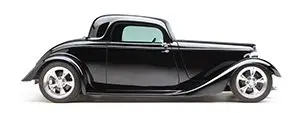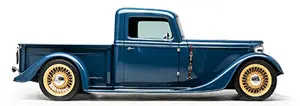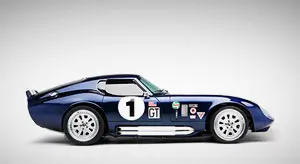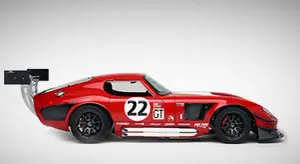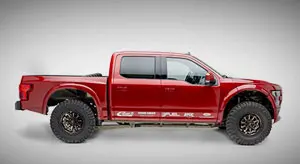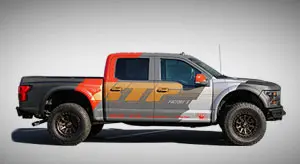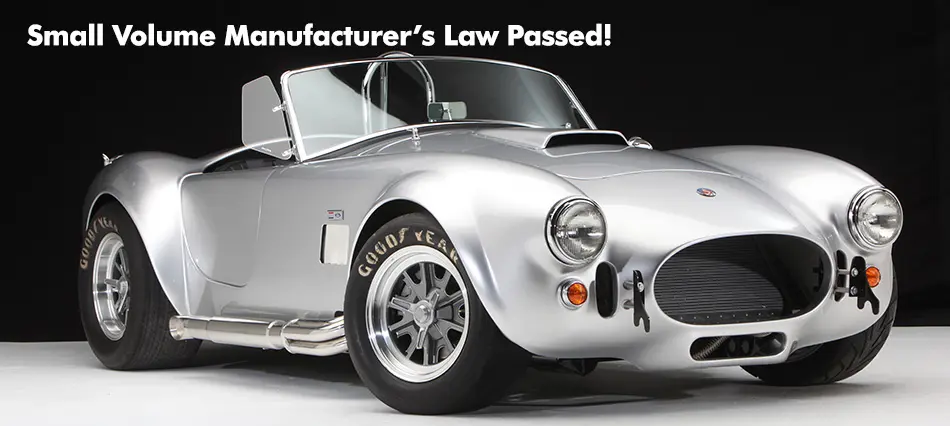
As many of you know, I have been working as a member of a task force with SEMA to draft a low-volume manufacturer’s law that would allow small companies like ours to build limited numbers of completed replica vehicles. This bill has now become law, and it is great news for small companies like ours, for the industry, and for customers.
Essentially, the bill allows small volume manufacturers exemptions from crash testing while building up to 325 or fewer replica vehicles per year. A replica is a design that is 25 years or older.
There is a lot more to the story, and we are not about to start building completed cars today (and we may never), but this is very good news for our industry. SEMA has published an excellent summary of the law and its applications. It’s a long read, but if you’re interested, the summary follows.

This new law will make collaboration with guys like Peter Brock easier to implement with completed vehicles and special edition vehicles.
NHTSA Provisions
Exemption From Vehicle Safety Standards For Low-Volume Manufacturers.
The Motor Vehicle Safety Act is amended to add an exemption for low volume manufacturers [49 U.S.C. § 30114]
A “low volume manufacturer” is a motor vehicle manufacturer whose annual worldwide production (including by a parent or subsidiary of the manufacturer) is not more than 5,000 motor vehicles each year.
A low volume manufacturer may construct and sell up to 325 replica vehicles in the U.S. each year.
A replica vehicle is a vehicle that resembles the body of another motor vehicle produced at least 25 years ago. The vehicle is subject to a license agreement for the intellectual property rights for the replicated vehicle from the original manufacturer, its successor/assignee or the current owner of the replicated vehicle’s intellectual property wherein those rights exist.
Replica vehicles will be treated as an assemblage of automobile equipment and subject to any current motor vehicle equipment safety standards (lighting, tires, windshields, brake hoses, etc.). They are exempt from safety standards that apply to motor vehicles (roof crush, side impact, bumper standard, etc.). The exemption recognizes that it is impractical to apply current model year standards to vehicles designed decades ago (ex: 1930’s roadster) or crash a vehicle when only a few are being produced.
Replica vehicles are exempt from the country of original labeling requirement, fuel economy ratings and the Monroney label requirement.
Replica vehicle manufacturers are required to register with the National Highway Traffic Safety Administration (NHTSA) and file annual production reports. NHTSA has 90 days to approve or deny the registration application (and 30 more days if the application is incomplete). Once approved, a registration may be revoked if the company fails to comply with the program requirements or if NHTSA issues a finding of a safety-related defect which the company has not corrected.
A permanent label is to be affixed to the vehicle identifying the standards from which the vehicle is exempt and designating the model year that the vehicle replicates. NHTSA may require that the manufacturer provide a written notice of the exemption(s) to the dealer and first purchaser.
Aside from the provided exemptions, replica vehicle manufacturers will be treated as motor vehicle manufacturers subject to recordkeeping and defect/noncompliance notification and remedy requirements.
Replica vehicles are subject to state titling and registration laws and regulations.
EPA Provisions
Vehicle Emission Compliance Standards For Low-Volume Motor Vehicle Manufacturers.
Section 206(a) of the Clean Air Act (42 U.S.C. 7525(a)) is amended to allow the replica vehicle to be equipped with a motor vehicle engine (including all engine emissions control equipment) which is already covered by an Environmental Protection Agency (EPA) certificate of conformity for the current model year in which the replica vehicle is produced. The replica vehicle will then be deemed emissions compliant.
The EPA will also deem the replica vehicle as being emissions compliant if the installed motor vehicle engine (including all engine emissions control equipment) has received an Executive Order from the California Air Resources Board (CARB) for the model year in which the replica vehicle is produced.
The replica vehicle manufacturer must install the engine in accordance with instructions provided by the engine manufacturer and self-certify the installation.
The replica vehicle manufacturer must affix emission control labels to the vehicle and provide the customer with emission control warranty information from the engine manufacturer, including where warranty repairs can be made, along with the EPA certificate of conformity number for the vehicle in which the engine was originally intended or the applicable CARB Executive Order (EO) number.
Replica vehicles are exempt from state-based emissions testing since the vehicles will have current model year engines.
Replica vehicle manufacturers are required to register with EPA and file annual production reports that include a description of the engine installed and the applicable vehicle certificate of conformity number or CARB EO number.
Except as otherwise provided, the replica vehicle manufacturer will be considered a vehicle manufacturer subject to applicable regulations, including being subject to civil penalties for compliance failures.
NHTSA and the EPA will have 12 months after enactment to issue any necessary regulations to implement the law.
Click here to read the text of the actual bill.
AutoWeek has a nice press release on this. Click here to read the article.

